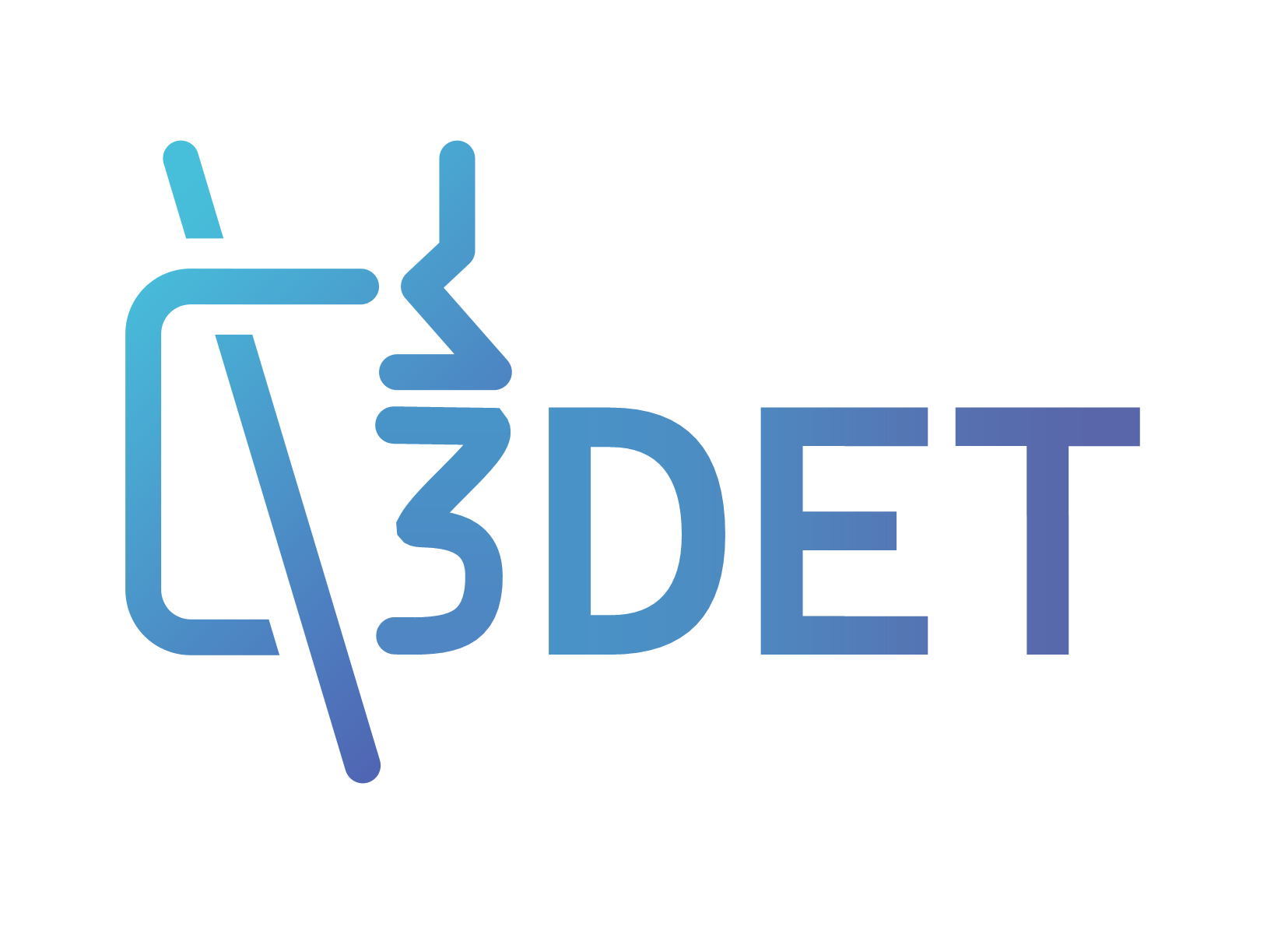Future scintillator detectors, such as neutrino active target detectors or sampling calorimeters, will aim at deploying a fine granularity 3D segmented geometry, composed of many optically-isolated scintillating voxels, to combine particle tracking, calorimetry and particle identification.
Below a sketch that shows a typical geometry used at the current and future neutrino experiments is shown. Each single detection voxel is made of a scintillating core covered by a white reflector/diffuser layer to provide the optical isolation, hence the 3D particle tracking capability.
All these features have to be combined in a large mass (order of several tonnes) scintillator detector, which makes it non-trivial and expensive, as it requires the usage of subtraction methods in post-processing. Some examples of similar detector geometries can be found at the neutrino experiments such as, T2K in Japan and SoLiD in Belgium, or in the CALICE calorimeter.
The 3DET collaboration aims to simplify the production of such detector configuration by adapting existing 3D printing techniques to the manufacturing of future particle detectors. The final goal is to be able to 3D print a single block particle detector made of small scintillating volumes covered by a light reflector and, when necessary, holes to host wavelength shifting fibers. The detector will be ready to be instrumented with the electronics readout without the need of any post-processing.
We also develop the 3D printing of inorganic scintillators to allow the fast creation of detector prototypes for the registration of ionizing radiation, such as alpha, beta and gamma particles in this layers of active material as well as of X-ray radiation.
